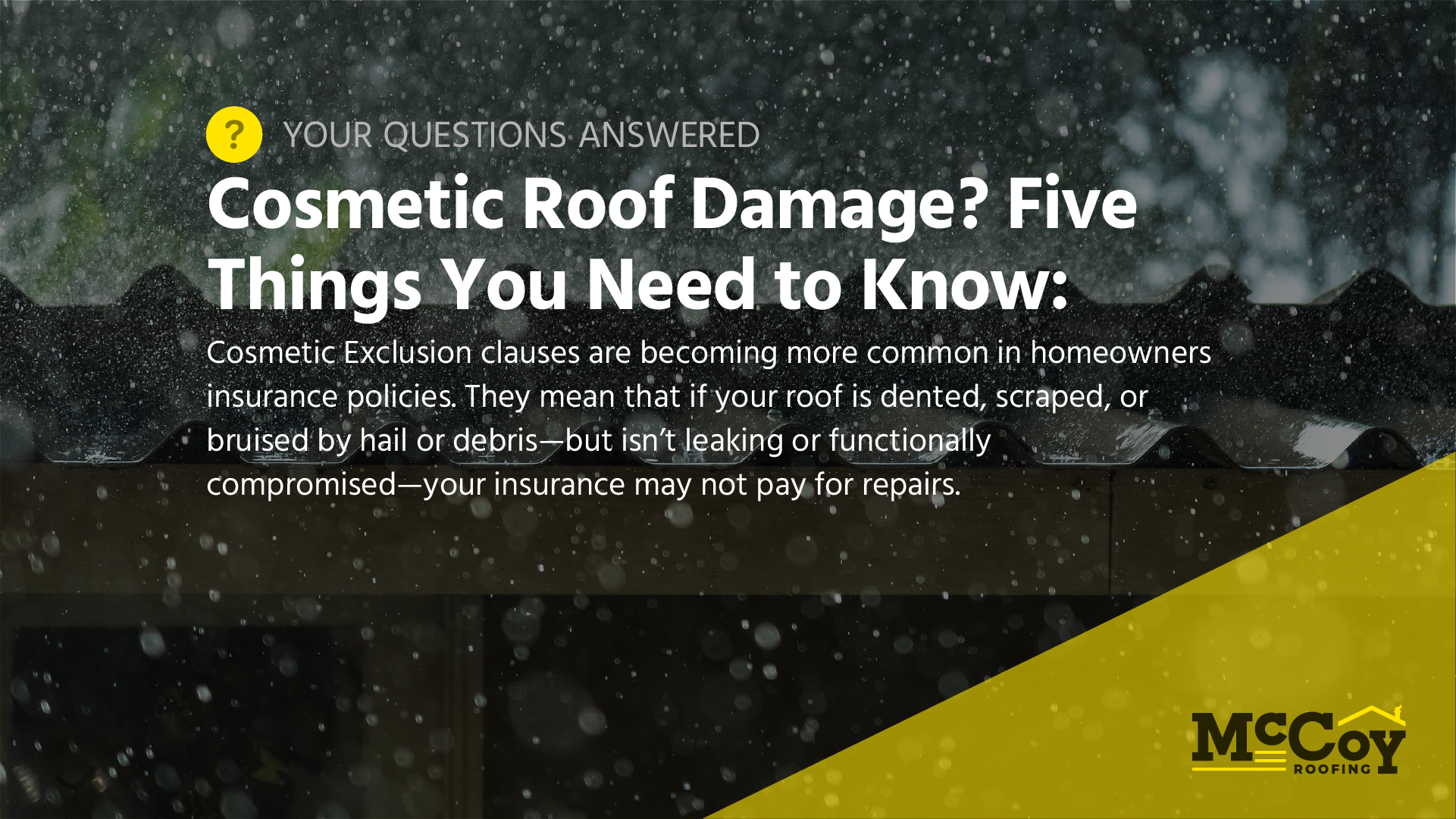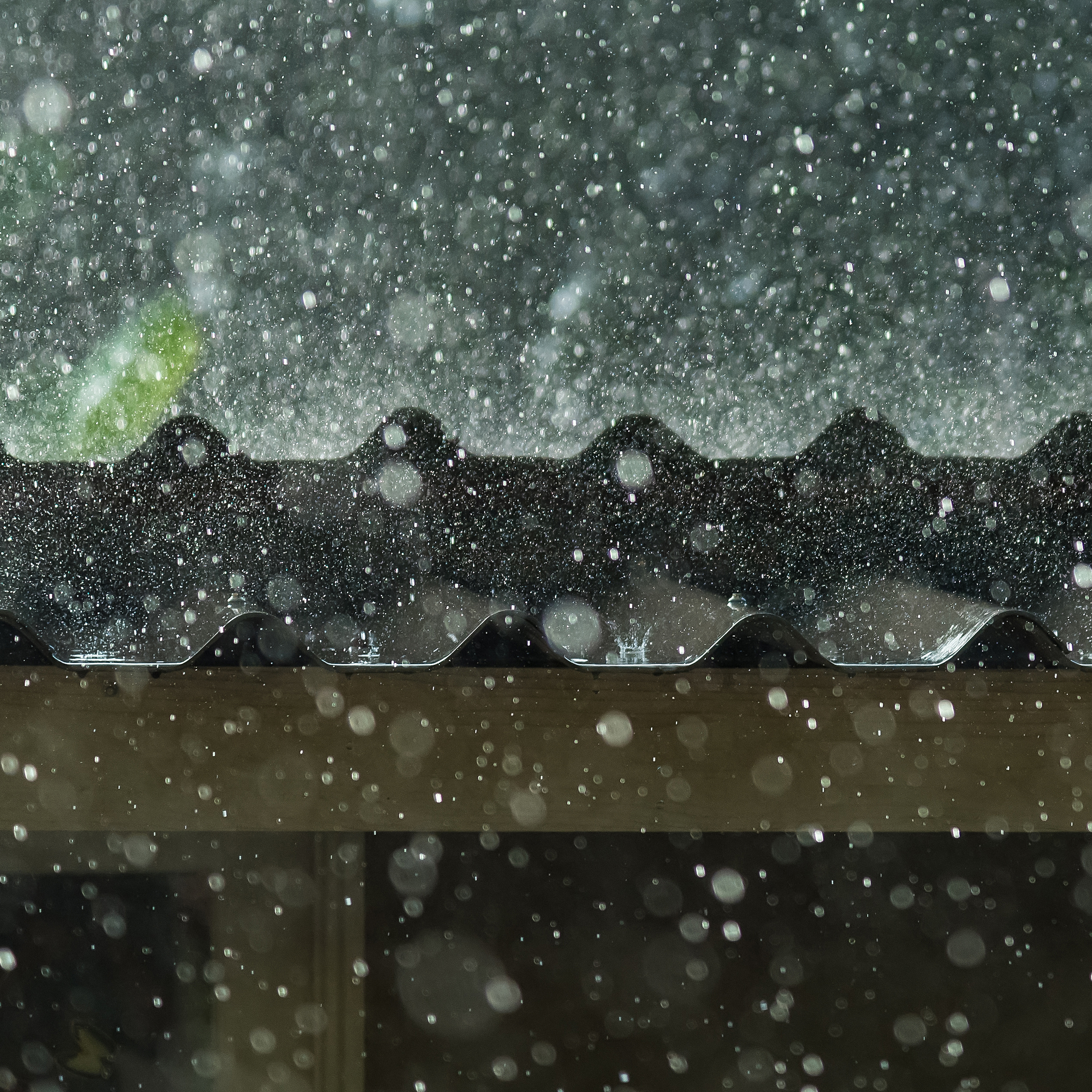

Cosmetic Roof Damage? Five Things You Need to Know:
“It’s a tough conversation to have with homeowners,” says Paul Browne, Operations Manager at McCoy Roofing. “The roof is visibly damaged, but the insurance adjuster says it’s ‘just cosmetic.’ That usually comes as a shock.”
Here’s what we believe every homeowner should understand—before a hailstorm hits your neighborhood.

1. What Is Cosmetic Roof Damage and Why Isn’t It Covered?
Cosmetic Exclusion clauses are becoming more common in homeowners’ insurance policies. They mean that if your roof is dented, scraped, or bruised by hail or debris but isn’t leaking or functionally compromised, then your insurance may not pay for repairs.
“For insurance to cover a shingle, you have to damage it to a point,” says Paul. “You have to actually prove damage.”
That might mean cracks, missing granules, or exposed underlayment—not just surface-level dents or scuff marks. If there’s no crack or missing paint, it likely won’t be covered.
2. How Cosmetic Roof Damage Can Still Hurt You Financially
A roof that still works but looks damaged can still cost you in other ways. From hurting curb appeal and resale value to creating issues during home inspections, cosmetic damage doesn’t always stay cosmetic.
“A dented roof might not leak today,” Paul explains, “but that doesn’t mean it won’t lead to problems over time—especially if it’s never looked at.”
3. Is Cosmetic Roof Damage Covered for Shingles and Metal Roofs?
Cosmetic exclusions are especially relevant for metal roofs, which are more likely to show visible dings and dents after a storm. But asphalt shingles can be affected, too.
“Granule loss, matting, and bruising. Those are real concerns with shingles,” says Paul. “But again, you’ve got to prove it. If there’s no break in the shingle or exposed underlayment, the insurance company may say it’s still functional.”
4. Can You Get Insurance Coverage for Cosmetic Roof Damage?
Yes, and it’s something you’ll want to look for before storm season hits.
Some insurance carriers offer what’s called a cosmetic damage rider. This is an optional policy add-on that ensures damage to your roof’s appearance—like dents, granule loss, or coating chips—is covered, even if the roof is still functional.
Here’s a helpful breakdown of how wind and hail cosmetic damage exclusions work from Insurance.com.
Without that rider, standard policies with a Cosmetic Exclusion won’t cover non-functional damage. So if aesthetics matter—or you want to preserve resale value—it’s worth a serious conversation with your agent.
5. Why Roof Inspections Matter After Cosmetic Hail Damage
Even if the damage seems minor, get your roof professionally inspected after severe weather. A trained roofer can help you document both cosmetic and functional issues—and provide the evidence your insurance might require.
“At McCoy Roofing, we’re not just looking for leaks. We’re looking for anything that could become a problem down the road,” Paul says.
Final Thought: Don’t Let Cosmetic Roof Exclusions Catch You Off Guard
Your insurance company’s definition of “damage” might not match yours. That’s why it’s critical to understand your policy before you need it. And if your roof does get hit?
Call a local, trusted roofer to help you navigate the process.
Need peace of mind? Schedule a free roof inspection with McCoy Roofing. We’ll assess the damage, help you understand your options, and walk you through what your policy really means.